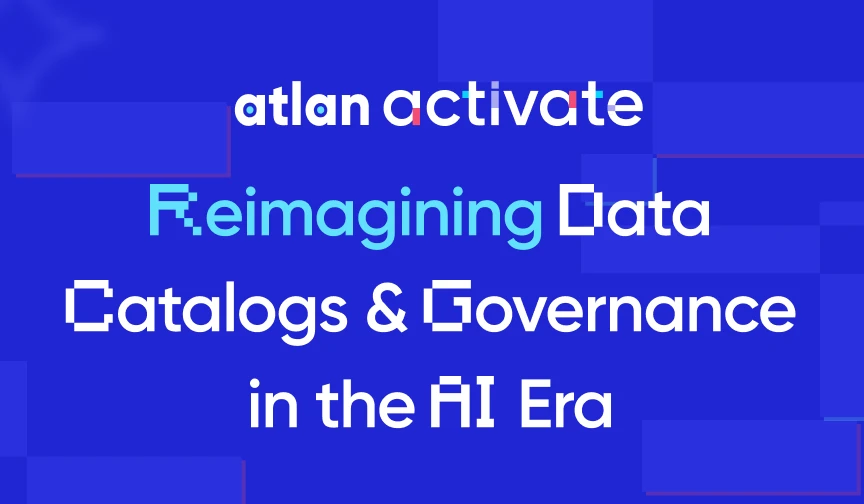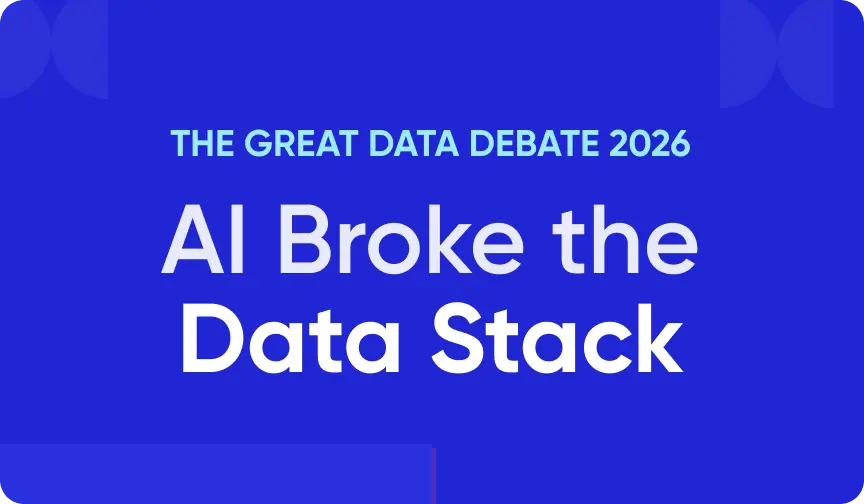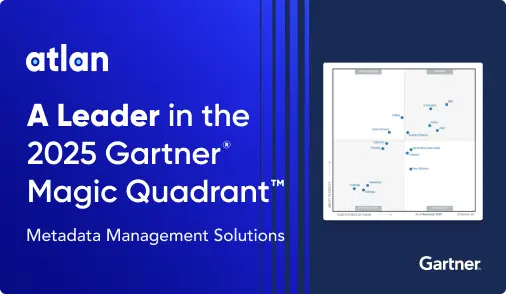GDPR Compliance Automation: Cut Costs, Reduce Risks & Stay Audit-Ready in 2025

Last Updated on: July 08th, 2025 | 12 min read
Unlock Your Data's Potential With Atlan

Quick Answer: What is GDPR compliance automation?
Permalink to “Quick Answer: What is GDPR compliance automation?”GDPR compliance automation uses technology to consistently enforce, monitor, and document controls required under the EU General Data Protection Regulation (GDPR). It automates key processes, such as:
- Data discovery
- Consent tracking
- Data subject request (DSR) fulfillment
- Policy enforcement
- Audit readiness
This helps organizations scale GDPR compliance across complex data environments, avoid costly fines, and demonstrate accountability to regulators and data subjects.
Up next, we’ll explore how GDPR compliance automation works, what you need to implement it, and how a metadata control plane can simplify enforcement at scale.
Table of Contents
Permalink to “Table of Contents”- GDPR compliance automation explained
- What are the key aspects of GDPR compliance automation?
- What are the prerequisites for GDPR compliance automation?
- What role does a metadata control plane play in GDPR compliance automation?
- How can Atlan help with GDPR compliance automation?
- Final thoughts on GDPR compliance automation
- GDPR compliance automation: Frequently asked questions (FAQs)
GDPR compliance automation explained
Permalink to “GDPR compliance automation explained”Summarize and analyze this article with 👉 🔮 Google AI Mode or 💬 ChatGPT or 🔍 Perplexity or 🤖 Claude or 🐦 Grok (X) .
GDPR compliance automation refers to the systems and workflows that automatically enforce the rights and obligations defined by the GDPR. These include:
- Data discovery and classification to identify personal and sensitive data (e.g., names, email addresses, financial details)
- Consent tracking to ensure data is processed lawfully
- DSR fulfillment (e.g., access, erasure, rectification, and portability requests)
- Audit logs and traceability for accountability and regulatory reviews
With the complexity and distributed nature of modern data stacks, manual compliance approaches are no longer scalable. GDPR automation makes it possible to detect risks, enforce policies, and demonstrate compliance with reduced operational overhead.
Why do you need GDPR compliance automation?
Permalink to “Why do you need GDPR compliance automation?”GDPR mandates strict controls over how organizations collect, process, store, and share personal data of EU residents, regardless of location. It applies to all organizations that:
- Operate in the EU
- Offer goods or services to EU residents
- Monitor an individual’s behavior in the EU
Moreover, any EU resident whose personal data has been captured, processed, stored or shared several rights, which include (but aren’t limited to):
- Right to be informed, especially in the event of a data breach
- Right to be forgotten (i.e., get their information deleted), officially known as the ‘Right to Erasure’
- Right to data portability (i.e., request access to their personal information and reuse it as they see fit)
- Right to an explanation regarding the use of data for automated individual decision-making
Read more → Everything you need to know about GDPR compliance
“With the renewed focus on individual data subjects and the threat of fines of up to €20 million or 4% of annual global turnover for breaching GDPR, organizations have little choice but to re-evaluate measures to safely process personal data.” - Bart Willemsen, research director at Gartner, on the importance of GDPR compliance
Automation makes it possible to address these obligations consistently, even at scale. Currently, organizations face challenges, such as:
- Identifying personal data across hybrid and cloud-native environments
- Tracking and enforcing consent preferences over time
- Responding to subject access requests (SARs) within 30 days
- Proving compliance during audits
Challenges with manual GDPR compliance: Real-world cases
Permalink to “Challenges with manual GDPR compliance: Real-world cases”For a prominent finserv company, GDPR compliance meant classifying PII, assigning business purposes, tracking ownership, etc. across a sprawling data landscape. Most of this work was manual and metadata coverage was limited.
Without automation, the company was staring at real legal and operational risks, with approximately $60M+ in fines in the event of non-compliance.
For a UK-based digital bank, Tide, complying with GDPR’s Right to Erasure meant manually finding and deleting data that persisted in secondary systems with local projections of personal data fields.
As Tide’s technology stack and architecture grew more complicated, new products and services were introduced, and customers increased over time, the compliance process took only more time and effort.
These examples highlight a recurring theme – the complexity of modern data environments makes manual compliance unsustainable.
Benefits of GDPR compliance automation
Permalink to “Benefits of GDPR compliance automation”GDPR compliance automation is ultimately about scaling trust and reducing risk. It enables data teams to focus on innovation and growth while ensuring privacy is embedded into every workflow.
Automating GDPR compliance offers measurable benefits, such as:
- Continuous discovery of personal data: Automatically scan and classify personal data across databases, data lakes, ETL tools, technical catalogs, BI platforms, and more. This reduces manual audit prep, speeds up response to regulatory inquiries, and avoids data blind spots that increase risk.
- Real-time policy enforcement: Enforce consent, data minimization, and retention policies across dynamic environments. for consent, masking, and retention. This prevents unauthorized use of personal data, lowering the chance of fines and building long-term trust in data.
- Automated fulfillment of data subject requests (DSRs): Identify and fulfill SARs, erasure, and portability requests within mandated timelines—even across complex stacks. This cuts down operational overhead, ensures timely legal compliance, and improves customer satisfaction.
- End-to-end, column-level data lineage and traceability: Track personal data from collection to transformation and usage. This embeds privacy in every workflow and reduces manual audit prep time, while improving your compliance posture.
- Centralized visibility and reporting: Monitor GDPR posture across systems, highlight gaps, and generate real-time compliance reports. This streamlines audits, improves collaboration across legal, data, and engineering teams, and enables faster decision-making.
- Reduced legal and operational risk: With automated guardrails, there’s less room for human error and greater consistency in how policies are applied.
GDPR compliance automation transforms reactive efforts into a proactive, always-on privacy strategy, which gives teams the tools to operationalize data protection by design.
What are the key aspects of GDPR compliance automation?
Permalink to “What are the key aspects of GDPR compliance automation?”To automate GDPR compliance effectively, organizations must orchestrate multiple workflows across systems. These include:
- Data discovery and classification: Automate scanning and tagging of personal and sensitive data (e.g., names, emails, IP addresses, biometric data) across all environments.
- Consent management and policy enforcement: Enforce user preferences around consent, access, processing, and retention through configurable policy rules.
- Subject access request (SAR) workflows: Automate identification of relevant records, validation steps, and delivery of responses to data subjects within the 30-day window.
- Audit trails and data lineage: Maintain detailed logs of who accessed what data, when, and for what purpose—critical for demonstrating lawful processing and accountability.
- Deletion and minimization workflows: Implement deletion policies (e.g., for Right to Erasure) and enforce data minimization across storage systems and analytical environments.
What are the prerequisites for GDPR compliance automation?
Permalink to “What are the prerequisites for GDPR compliance automation?”Before you automate, you need a clear understanding of your compliance posture and data landscape. Start by asking:
- What personal data is collected, processed, or stored—and where does it reside?
- Which systems (internal or third-party) process EU resident data?
- What are your legal bases for data processing (e.g., consent, contract, legal obligation)?
- Who owns GDPR-related responsibilities across your organization?
- What is the current process for managing subject rights, breach notifications, and audits?
- Are consent preferences and data subject identities consistently tracked and enforced?
Without these answers, automation may reinforce gaps instead of fixing them. A solid foundation in data governance and system visibility is essential to reduce risk, prevent data misuse, and enable repeatable GDPR workflows.
This is where a metadata control plane comes in.
Why metadata matters for GDPR compliance automation
Permalink to “Why metadata matters for GDPR compliance automation”GDPR compliance is rooted in accountability, transparency, and control—all of which rely on metadata. Metadata answers critical questions like:
- Who owns this data?
- Where did it come from?
- What does it contain?
- Who has access to it?
- Is it subject to GDPR obligations?
Without this context, it’s nearly impossible to enforce policies or demonstrate compliance. For example, fulfilling a SAR or deletion request requires accurate identification of personal data across systems. This can’t happen without robust metadata about data location, type, and lineage.
Metadata transforms GDPR from a compliance burden into a structured, auditable process, making it essential to automation.
What role does a metadata control plane play in GDPR compliance automation?
Permalink to “What role does a metadata control plane play in GDPR compliance automation?”A metadata control plane activates metadata across your stack and embeds governance into day-to-day workflows.
Here’s how it supports GDPR compliance automation:
- Policies as code: Define consent, access, and retention policies as reusable, version-controlled code that can be enforced across your data estate.
- Active, automated data lineage: Visually trace personal data from ingestion to processing to sharing, which is essential for SAR fulfillment, impact analysis, and breach response.
- Automated classification and tag propagation: Identify personal and sensitive data using rule-based and ML-driven classification. Automatically apply tags that drive access controls and policy enforcement downstream.
- Consent and purpose-based access controls: Regulate access based on user personas, consent status, processing purpose, or data product/domains, powered by SCIM and fine-grained policies.
- Compliance dashboards and real-time alerts: Monitor GDPR posture, flag policy violations, and surface issues before they escalate into breaches or fines.
A metadata control plane makes GDPR automation scalable, explainable, and trustworthy while reducing manual intervention.
How can Atlan help with GDPR compliance automation?
Permalink to “How can Atlan help with GDPR compliance automation?”Atlan is a metadata activation platform designed to embed governance, compliance, and automation into modern data environments. Its active metadata foundation constantly refreshes data context and ownership, ensuring controls remain accurate and up-to-date.
Moreover, its open API architecture supports custom workflows, integrations, and AI-driven governance, which is vital for organizations with complex and evolving data environments.
Key features that support GDPR compliance automation include:
- Source-based integration of access controls through SCIM
- Real-time, top-down insight on policy coverage, incidents, and data lineage through clear, business-friendly dashboards
- GDPR policies as code (Playbooks) to automate tagging, ownership, approval routing, and enforcement triggers—embedded directly into BI tools, data catalogs, and storage systems
- End-to-end, column-level active data lineage with root cause and impact analysis
- AI-powered metadata enrichment with Atlan’s AI automatically documenting up to 55% of your data estate and generating enriched descriptions
- Extensive audit logging and traceability
Beyond automation, Atlan is ISO 27001, ISO 27701, and SOC 2 Type II certified, thereby providing assurance that the control plane itself adheres to rigorous privacy and security standards.
How North witnessed a 700% increase in tagged assets & reduced millions in risk with automation
Permalink to “How North witnessed a 700% increase in tagged assets & reduced millions in risk with automation”North is a leading payments solution provider processing over $100 billion in annual transactions. They improved their compliance posture by using Atlan as their metadata activation platform.
North managed to avoid the painstaking work of identifying, tagging, and recording policies one-by-one across a 225,000-asset landscape with Atlan’s Playbooks, two-way tag sync, and automated lineage.
This led to a 700% increase in tagged assets, significantly improving their security and compliance, and projected savings of $1.4 million per year in effort, i.e., duplicate work, manual and tedious research.
“With the ability to discover data faster, apply tags, and reverse sync that data back into Snowflake, we added more than 2,000 governance assets in under a year. That’s just the tip of the iceberg.” - Daniel Dowdy, Vice President, Data Analytics & Governance at North
Final thoughts on GDPR compliance automation
Permalink to “Final thoughts on GDPR compliance automation”GDPR is one of the most far-reaching data privacy laws in the world—and it’s here to stay. Manual compliance might have worked when data volumes were smaller and stacks simpler. But today’s organizations need automation rooted in metadata to keep pace.
GDPR compliance automation helps you fulfill obligations faster, prevent fines, and strengthen user trust while reducing operational load.
With a metadata control plane like Atlan, you can weave privacy into your data workflows, prove accountability, and stay ready for change.
GDPR compliance automation: Frequently asked questions (FAQs)
Permalink to “GDPR compliance automation: Frequently asked questions (FAQs)”1. What is GDPR compliance automation?
Permalink to “1. What is GDPR compliance automation?”GDPR compliance automation refers to the use of technology and metadata-driven tools to enforce, monitor, and document adherence to the General Data Protection Regulation. It automates key tasks such as identifying personal data, managing consent, processing subject requests, and maintaining audit trails.
2. Who needs to comply with GDPR?
Permalink to “2. Who needs to comply with GDPR?”Any organization (regardless of where it’s based) that collects, processes, or monitors the behavior of EU residents must comply with GDPR. This includes companies offering goods or services in the EU or tracking users located in the EU.
3. What are the risks of non-compliance with GDPR?
Permalink to “3. What are the risks of non-compliance with GDPR?”Non-compliance can lead to significant fines—up to €20 million or 4% of annual global turnover, whichever is higher. It also brings reputational risk, operational disruption, and potential legal action from individuals.
4. What makes GDPR compliance challenging without automation?
Permalink to “4. What makes GDPR compliance challenging without automation?”Manual compliance is slow, fragmented, and error-prone—especially in modern hybrid or cloud-native data environments. Tracking every copy of personal data, honoring consent changes, and responding to requests within 30 days becomes nearly impossible at scale.
5. What are common GDPR requirements that can be automated?
Permalink to “5. What are common GDPR requirements that can be automated?”Automation can support the following GDPR compliance requirements:
- PII discovery and classification
- Consent tracking and policy enforcement
- Data subject access requests (DSARs)
- Right to be forgotten workflows
- Data lineage and breach reporting
- Real-time access control and masking
6. Why is metadata important for GDPR compliance?
Permalink to “6. Why is metadata important for GDPR compliance?”Metadata gives context to data—what it is, where it lives, who owns it, how it’s used. This is essential for locating personal data, tracking its flow across systems, and enforcing GDPR controls like access restrictions and audit trails.
7. How does a metadata control plane help with GDPR compliance?
Permalink to “7. How does a metadata control plane help with GDPR compliance?”A metadata control plane activates metadata across the data stack to enable automated classification, access control, policy enforcement, and subject request fulfillment while maintaining audit-readiness and reducing manual overhead.
8. How can Atlan help with GDPR compliance automation?
Permalink to “8. How can Atlan help with GDPR compliance automation?”Atlan automates personal data discovery, classification, policy enforcement, and audit documentation using active metadata. Features like Playbooks, active data lineage, open API architecture, and real-time policy dashboards help simplify your GDPR compliance obligations at scale.
Share this article
Atlan is the next-generation platform for data and AI governance. It is a control plane that stitches together a business's disparate data infrastructure, cataloging and enriching data with business context and security.
GDPR compliance automation: Related reads
Permalink to “GDPR compliance automation: Related reads”- What is Data Governance? Its Importance, Principles & How to Get Started?
- Open Source Data Governance Tools - 7 Best to Consider in 2025
- Data Governance Policy: Examples, Templates & How to Write One
- 7 Best Practices for Data Governance to Follow in 2025
- Benefits of Data Governance: 4 Ways It Helps Build Great Data Teams
- Data Governance Roles and Responsibilities: A Quick Round-Up
- AI Data Governance
- Data Compliance Management in Financial Services
- Data Governance and GDPR: What You Need to Know in 2025
- Data Readiness for AI: 4 Fundamental Factors to Consider
- Data Classification and Tagging: How to Marie Kondo Your Data Catalog and Spark Joy
- Automated Data Governance: How Does It Help You Manage Access, Security & More at Scale?
- Enterprise Data Governance Basics, Strategy, Key Challenges, Benefits & Best Practices
- Data Governance in Banking: Benefits, Challenges, Capabilities
- Financial Data Governance: Strategies, Trends, Best Practices
- BCBS 239 Data Governance: What Banks Need to Know in 2025
- Financial Data Compliance Software: What Qualities Matter in 2025
- AI for Compliance Monitoring in Finance: Use Cases & Setup
- Overlapping Compliance Requirements in Banking: What’s the Way Forward?
- Cross-Border Data Transfers: Staying Compliant Globally in 2025
- Unified Control Plane for Data: The Future of Data Cataloging





















